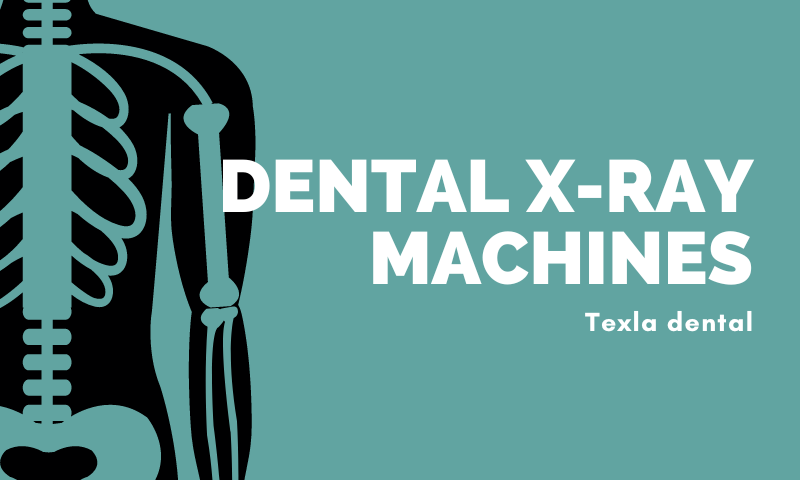Dental X-rays are useful equipment in current dentistry used widely in evaluating and diagnosing oral health. These machines produce images, which are essential in the diagnosis of various dental complications so that the dentist can offer the best solution. This paper focuses on describing the basic components of dental X-ray machines, their operation, and existing types, among others.
Explain Dental X-rays?
Dental X-rays in this context relate to a special kind of radiograph that is used in the recording of the teeth, the gums, and other related tissues. Using the dental X-ray machine, these prints are essential in realizing what is hidden from the natural vantage point, understanding that which cannot be observed at first sight.
Dental X-rays emit low-energy radiation to form these images and are therefore useful in diagnosis.
Does a dental X-ray machine work?
A dental X-ray machine works by directing a measured beam of radiation on the teeth. The radiation passes through the body and falls on a digital sensor or a film, and what you see is very clear.
Digital X-rays machines employ present-day technology, as they enable the instant display of the images on a computer. It is much safer than systems that utilize film for exposing patients to radiation during the imaging process, as this method means a lower radiation dose.
What Can Dental X-rays Detect?
Dental X-rays are key in identifying various issues, including:
Cavities and Tooth Decay: Finding out signs of decay that are invisible at the initial physical assessment by the vet.
Impacted Teeth: Analysis of the placement of teeth, especially the third molars, to know whether they should be removed or not.
Infections and Abscesses: While STYLE, there may be underlying infections that may not showcase signs and symptoms on the skin.
Bone Loss: Determining the condition of the alveolar bone is important in periodontal disease assessment.
Dental X-ray machines contribute largely to enhancing treatment planning since they provide information more than the usual vision.
Disadvantage of Dental X-rays
While dental X-rays provide basic information about the teeth and jaws, they have the added danger of radiation. Even though the contact of patients with radiation is estimated in fractions of a micro-sievert and is generally beyond permitted levels.
Ideally, there are some risks involved in the process, although dental care providers ensure that patients are protected by wearing apparel like a lead bib that puts the body under the machine to get proper Results. Also, pregnant patients should not have unneeded X-rays, though dental care providers can sometimes protect the fetus if the images are required.
Types of X-rays
Some of the X-rays used in dentistry include intraoral and extraoral radiography, and they’re subdivided as follows:
What Roles Do There in the Comprehensiveness of Dental X-rays?
Intraoral X-rays:
This types of X-ray are taken to the particular are of teeth where to check and nearby tissue these are the following types :
- Bitewing X-rays
- Periapical X-rays
- Occlusal X-rays
Extraoral X-rays:
These X-rays to take the image of full skull and mouth these are the following types :
- Panoramic X-rays
- Cephalometric X-rays
Both physical and virtual dental X-ray machines are used for different diagnostic purposes, contributing to the efficiency of oral health care.
What After Dental X-rays?
Patients who have had dental X-rays taken will be expected to have the films explained and evaluated by the dentist. A clear benefit of digital X-rays is the capacity to make an assessment instantly, which, given this, would make decisions on the most suitable courses of action possible.
If there are any issues, like caries or inflammation, as an example, the dentist will discuss further management. On the other hand, if there are none, the patient is advised to go on practicing good oral hygiene.
Results and Follow-Up
The findings of dental X-rays directly affect further treatment. Based on the results, dentists may recommend:
Regular dental cleaning is crucial for the health of teeth and to avoid cavity formation.
Follow-up X-rays: Based on the identified issues, further imaging may be ordered to review the progress in some cases.
Treatment Plans: Cosmetic treatments, for example, filling, capping, or even orthodontic correction, may be recommended depending on the X-ray results.
Translation: Well-organized check-ups, including X-rays, serve as a key prerequisite to achieving permanent recognition in the field of oral health.
Conclusion
Briefly, dental X-ray machines are virtually crucial in modern dentistry as they allow for a detailed examination of a patient’s oral cavity. They enable dentists to identify conditions such as cavities, tooth decay, impacted teeth, and other related diseases from which treatment can be prescribed. Being enlightened about the different kinds and uses of dental X-ray machines, the patients can personally participate in any decision regarding their oral health and see the wisdom in undergoing the evaluation from time to time. The technology in the area is ever-improving, with current X-ray images being digital, improving the safety and efficiency of diagnosis, which will grow the oral health care field.
Q&A ASK about Dental X-rays machines:
- What is a dental X-ray machine?
A dental X-ray machine is specifically used to produce photographs of the teeth, gums, and associated tissues using electromagnetic wave radiation. They also are called radiographs and enable dentists to identify concerns that cannot be seen by the naked eye such as cavities and decay before they progress and periodontal disease.
- What dental X-ray machine can be taken in Dental practice and what diseases or abnormalities can they reveal?
They are also essential when identifying cavities, tooth decay, gum disease, impacted teeth, or infection in the jawbone. These frameworks enable one to be diagnosed at an early stage, and this means that the complete cure for the illness will be affected.
- Are dental X-rays safe?
Dental X-rays are safe provided they are taken appropriately and reasonably necessary. According to Gean, the radiation dosage is extremely low and below the exposure that is likely to be received from a chest X-ray.

